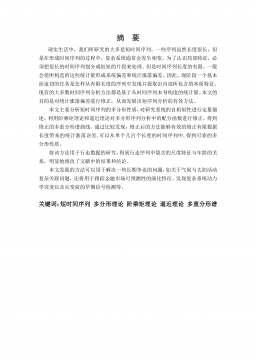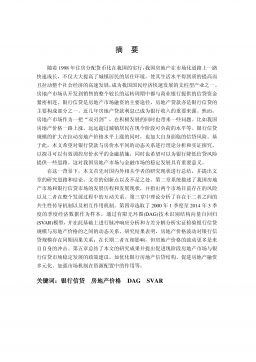溴氧化铋复合材料的制备及其光催化性能研究
VIP免费
摘 要
近年来,全球水资源污染现象越来越严重,而水资源与人们的日常工作和生
活息息相关。造成水体污染的途径多种多样,其中染料废水以其色度高,可生物
降解性差等特点难以处理。因此,研究一种高效、稳定和节能地处理处置染料废
水的方法,成为环境污染治理领域的热点。光催化技术是在高级氧化技术的基础
上发展起来的一种新兴废水处理方法,对一些特殊污染物的处理效果比其他处理
技术更佳。而且具有污染物降解彻底、无二次污染、反应条件温和及成本低廉等
优点。光催化技术的主要原理是:吸收了一定能量光的半导体材料,其电子受到
激发,从价带跃迁到导带,分别在价带和导带上产生空穴和电子。空穴和电子拥
有良好的氧化还原能力,能够将污染物降解为二氧化碳和水等小分子。目前研究
最广泛的半导体光催化材料是二氧化钛,但二氧化钛的禁带宽度较大,对可见光
的吸收利用能力较低,同时具有回收困难等缺点,严重制约了二氧化钛在光催化
领域的应用。因此,对二氧化钛进行结构改性或者设计合成新型的光催化剂成为
研究热点。
铋基化合物具有禁带宽度适中及特殊的层状结构特点,受到研究人员的广泛
关注,其中最具代表性的是溴氧化铋化合物。溴氧化铋的结构为四方晶型,具有
独特的电子结构和良好的光催化性能,在光催化降解有毒有机污染物方面具有很
大的潜在应用价值。但溴氧化铋电子-空穴对复合率较高,其光催化活性受到很大
限制。为解决上述问题,人们将溴氧化铋与其它具有合适价带结构的半导体材料
进行复合,提高电子寿命,降低光生载流子的复合率,从而大大提高其光催化效
果。本文设计合成了能带匹配的溴氧化铋-氮化碳复合材料,对其结构进行分析表
征,进而研究材料的光催化性能和机理。
本研究首先以三聚氰胺为前驱体,通过煅烧硝酸改性的三聚氰胺得到多孔氮
化碳,样品的扫描电镜和透射电镜证明材料表面布满狭长的孔隙,红外光谱和 X
射线衍射分析证实材料的部分结构被破坏,该多孔氮化碳的比表面积明显增大,
为三聚氰胺直接煅烧所得材料比表面积的 2倍。该材料可有效光催化降解去除溶
液中的染料罗丹明 B,其表观动力学速率常数为三聚氰胺直接煅烧所得材料的 6.2
倍。活性基团捕捉实验和电子自旋共振测试证明光催化过程中超氧自由基起主要
作用。
同样,以三聚氰胺为前驱体,本文合成了另一种改性氮化碳,即直接煅烧三
聚氰胺得到体相氮化碳,体相氮化碳经再次煅烧得到最终产物。通过 X射线衍射、
傅里叶红外变换光谱分析等表征手段确认该材料为氮化碳,比表面积大大增加。
原子力显微镜显示该氮化碳有 4个原子层厚度,即片层氮化碳。片层氮化碳可高
效降解溶液中的罗丹明 B分子。基于实验结果,本研究选择片层氮化碳进行下一
步复合材料的制备研究。
通过化学沉积沉淀法一步合成片层氮化碳-溴氧化铋的复合材料。面扫描元素
分析证明各种元素在溴氧化铋复合材料中均匀分布。溴氧化铋复合材料的比表面
积相对纯溴氧化铋明显增加,且随着片层氮化碳加入量的增加,其比表面积越来
越大。X射线衍射、傅里叶红外变换光谱、扫描电镜和透射电镜等分析证明两种
材料在复合过程中各自结构没有遭到破坏,且在两相交界面处形成了明显的异质
结构。该材料在可见光条件下可高效降解罗丹明 B和2,4-二氯苯酚。其中,光催
化降解能力最强的样品的罗丹明 B降解速率分别是纯溴氧化铋和片层氮化碳的 2.7
和6.8 倍,2,4-二氯苯酚反应速率分别为纯溴氧化铋和片层氮化碳的 7.5 和2.5 倍。
活性基团捕捉实验证明,空穴和超氧自由基在光催化降解罗丹明 B的过程中起主
要作用,而羟基自由基和超氧自由基在光催化降解 2,4-二氯苯酚过程中起主要作用。
根据实验结果和组分能带结构,对复合材料的光催化机理进行了初步推测。
关键词:溴氧化铋 片层氮化碳 复合材料 光催化降解 罗丹明 B 2,4-
二氯苯酚 光催化机理
ABSTRACT
Nowadays, water resource pollution is becoming more serious, which is closely
linked to people’s daily work and life. As known, there are various pollution sources to
water body. Among them, dye wastewater is difficult to deal with, because its chroma is
high and the biodegradability is low. So the great concern of environmental pollution
improvement is to develop an efficient, stable, and energy conservation method to treat
dye wastewater. Photocatalysis technology is a newly developed method for wastewater
treatment, originating from the advanced oxidation technology. It has a good treatment
effect for some special contaminants, with features of complete removal, no secondary
pollution, moderate reaction conditions, and low cost. The main principle of
photocatalysis technology is described as: after absorption of light with appropriate
energy, electrons in semiconductors are motivated, transferred from the valence band to
the conduction band. Correspondingly, holes and electrons are obtained on the
conduction band and valence band, respectively. The resultant electrons and holes own
strong redox ability. So far, the most researched semiconductor is titania, owning to
reported good merits. However, its applications in photocatalysis are greatly restrained,
as the result of large energy gap, low light absorption and utilization ability, and
difficult recovery. Therefore, it is quite desired to modify titania or develop other
materials to fulfill the requirement of photocatalytic system with high efficiency,
stability and strong visible light response.
The bismuth-based semiconductors gained much attention, due to the appropriate
energy gap and special stratified structure. The most representative one is bismuth
oxybromide (BiOBr) in a tetragonal phase. BiOBr owns unique electron structure and
excellent photocatalytic ability, having potential applications towards catalytic
degradation of toxic organic contaminants. However, its photocatalytic performance is
greatly restrained by the high recombination rate of electron-holes, which can be solved
by coupling BiOBr with other ingredients with proper band structures.
In this study, a series of BiOBr-graphitic carbon nitride (g-C3N4) hybrids were
constructed, characterized, and then subjected to photocatalytic evaluation. A possible
catalytic mechanisom was proposed basing upon experimental results.
In the first section, mesoporous g-C3N4 was fabricated through the direct pyrolysis
of nitric acide solution treated melamine. The presence of narrow slit-shaped pores on
surface was demonstrated by SEM and TEM images. The partial destruction of structure
was confirmed by X-ray diffraction patterns and FT-IR spectra, which may possibly
result into the increase of specific surface area. These samples were able to efficiently
remove Rhodamine B (RhB) in solutions, with an apparent kinetic rate constant 6.2
times that of g-C3N4. Active species trapping measurements and ESR measurements
indicated that ·O 2- was main active species.
The second section was relevant to the synthesis and photocatalytic performance of
another g-C3N4 materials. The direct pyrolysis of melamine produced bulk g-C3N4,
which was pyrolyzed again to generate exfoliated C3N4 nanosheets, denoted as CNs. A
similar structure of CNs to that of bulk g-C3N4 was confirmed by X-ray diffraction and
FT-IR spectra. The sepecifc surface area is obviously enhanced. In addition, atomic
force microscope revealed 4-atom layered structure in CNs. CNs showed much higher
photocatalytic efficiency upon RhB degradadation than bulk g-C3N4. According to the
experiment, CNs was choosen as an ingredient to fabricate hybrids in the following
step.
Various BiOBr-CNs hybrids were prepared through a chemical deposition
precipitation method. TEM elemental mapping images showed that five elements were
evenly dispersed in the testing region, revealing the coexistence of two ingredients in a
uniform manner. The specific surface area of BiOBr hybrids was markedly increased.
With the increase of CNs, the specific surface area was improved. X-ray diffraction,
FT-IR spectra, SEM and TEM images indicated that BiOBr and CNs were not destroyed
and formed heterojunction structure between both interfaces. During the process of
degrading RhB and 2,4-dichlorophenol (2,4-DCP), samples 0.5CNs-BiOBr and
CNs-BiOBr exhibited the highest photocatalytic activity. In the process of degradation
of RhB, the photocatalytic reaction rate of 0.5CNs-BiOBr is 2.7 and 6.8 times of pure
BiOBr and CNs. In the process of degradation of 2,4-DCP, the photocatalytic reaction
rate of CNs-BiOBr is 7.5 and 2.5 times of pure BiOBr and CNs. Active specises
trapping experiment demonstrated that h+ and ·O 2- played leading roles in the process of
photocatalytic degradation of RhB. ·OH and ·O 2- played leading roles in the process of
photocatalytic degradation of 2,4-DCP.
Key Word: Bismuth oxybromide, g-C3N4 nanosheets, hybrids,
photocatalytic degradation, Rhodamine B, 2,4-dichlorophenol,
photocatalytic mechanism
目 录
中文摘要
ABSTRACT
第一章 绪论 ......................................................... 1
1.1 光催化技术 ..................................................... 1
1.1.1 光催化技术简介 .............................................. 1
1.1.2 光催化反应原理 .............................................. 2
1.2 氮化碳材料的研究现状 ........................................... 3
1.2.1 体相氮化碳的形貌控制 ........................................ 3
1.2.2 片层氮化碳的制备 ............................................ 4
1.3 溴氧化铋材料的研究现状 .......................................... 5
1.3.1 材料简介 .................................................... 5
1.3.2 形貌控制 .................................................... 6
1.3.3 与其它材料复合 .............................................. 7
1.4 选题意义与研究内容 ............................................. 8
1.4.1 选题意义 .................................................... 8
1.4.2 研究内容 .................................................... 9
第二章 氮化碳材料的制备、表征及其光催化性能研究 .................... 10
2.1 多孔氮化碳材料的制备、表征及其光催化性能研究 .................. 10
2.1.1 多孔氮化碳材料的制备 ...................................... 10
2.1.2 多孔氮化碳材料的表征 ...................................... 11
2.1.3 多孔氮化碳材料的光催化 .................................... 15
2.1.4 结论 ...................................................... 17
2.2 氮化碳纳米片层的制备、表征及其光催化性能研究 .................. 17
2.2.1 氮化碳纳米片层的制备 ...................................... 17
2.2.2 氮化碳纳米片层的表征 ...................................... 19
2.2.3 氮化碳纳米片层的光催化 ..................................... 22
2.2.4 结论 ....................................................... 23
第三章 溴氧化铋复合氮化碳材料的制备、表征和光催化结果 .............. 24
3.1 溴氧化铋复合材料的制备 ......................................... 24
3.1.1 实验试剂 .................................................. 24
3.1.2 实验设备 .................................................. 24
3.1.3 表征测试条件 .............................................. 24
3.1.4 材料制备方法 .............................................. 25
3.1.5 光催化实验方法 ............................................ 25
3.2 表征的结果与讨论 ............................................... 26
3.2.1 热重分析 .................................................. 26
3.2.2 X 射线衍射分析(XRD) ........................................ 27
3.2.3 X 射线光电子能谱学(XPS) .................................... 28
3.2.4 傅里叶红外变换 (FT-IR) .................................... 29
3.2.5 紫外可见漫反射(UV-vis) ..................................... 30
3.2.6 扫描电镜(SEM)、透射电镜(TEM) .............................. 31
3.2.7 N2吸附脱附等温线 ........................................... 35
3.3 光催化活性测试 ................................................. 36
3.3.1 光催化结果 ................................................ 36
3.3.2 光催化机理 ................................................. 39
3.4 本章结论 ....................................................... 41
第四章 结论与展望 ................................................... 42
4.1 结论 ........................................................... 42
4.2 展望 ........................................................... 42
参考文献 ............................................................ 44
在读期间公开发表的论文和承担科研项目及取得成果 ...................... 54
致谢 ................................................................ 55
相关推荐
-
公务员思想政治教育研究VIP免费
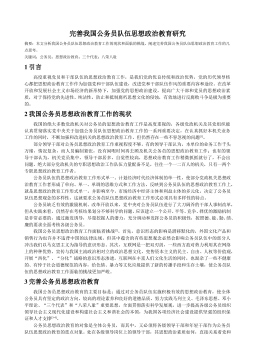
 2024-10-15 30
2024-10-15 30 -
在线社会网络中用户行为的实证分析与机制建模研究VIP免费
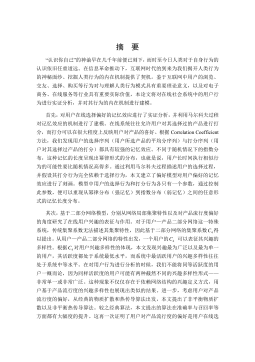
 2025-01-09 6
2025-01-09 6 -
智能优化方法对神经网络的改进及应用研究VIP免费
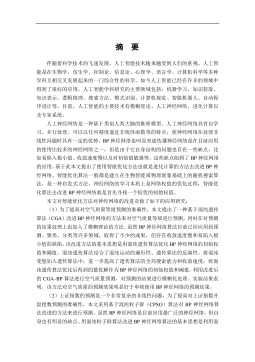
 2025-01-09 6
2025-01-09 6 -
鲜切哈密瓜保鲜技术研究VIP免费

 2025-01-09 8
2025-01-09 8 -
小城镇道路网级配方法及应用研究VIP免费
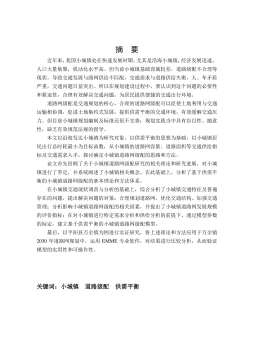
 2025-01-09 6
2025-01-09 6 -
医学信息集成测试系统的研究与实现VIP免费
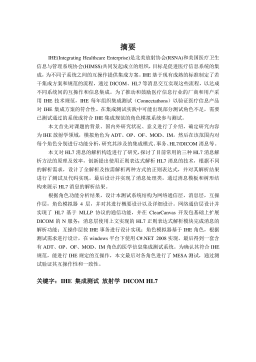
 2025-01-09 7
2025-01-09 7 -
余热驱动氨水吸收式制冷系统的理论及实验研究VIP免费
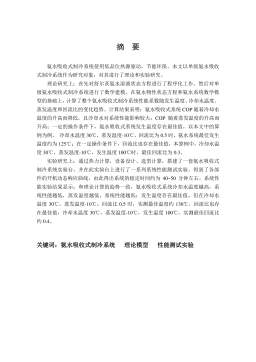
 2025-01-09 7
2025-01-09 7 -
喷雾降温技术适用性及热环境研究VIP免费
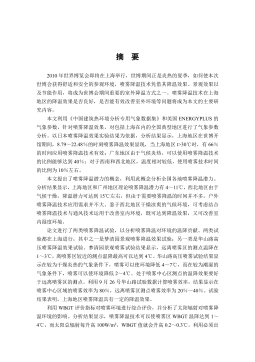
 2025-01-09 9
2025-01-09 9 -
收缩—扩张喷嘴的气泡雾化数值模拟VIP免费

 2025-01-09 8
2025-01-09 8 -
支持供应链的工作流系统结构及其计划与调度的研究与应用VIP免费
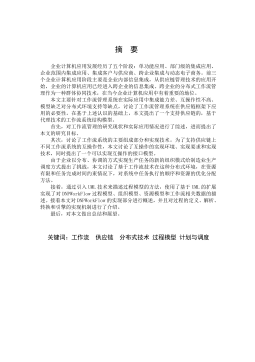
 2025-01-09 11
2025-01-09 11
作者:侯斌
分类:高等教育资料
价格:15积分
属性:59 页
大小:5.06MB
格式:PDF
时间:2025-01-09
相关内容
-

医学信息集成测试系统的研究与实现
分类:高等教育资料
时间:2025-01-09
标签:无
格式:PDF
价格:15 积分
-

余热驱动氨水吸收式制冷系统的理论及实验研究
分类:高等教育资料
时间:2025-01-09
标签:无
格式:PDF
价格:15 积分
-

喷雾降温技术适用性及热环境研究
分类:高等教育资料
时间:2025-01-09
标签:无
格式:PDF
价格:15 积分
-

收缩—扩张喷嘴的气泡雾化数值模拟
分类:高等教育资料
时间:2025-01-09
标签:无
格式:PDF
价格:15 积分
-

支持供应链的工作流系统结构及其计划与调度的研究与应用
分类:高等教育资料
时间:2025-01-09
标签:无
格式:PDF
价格:15 积分


